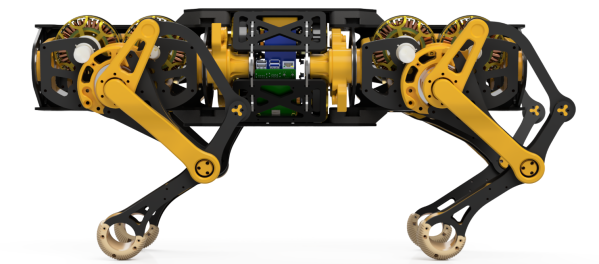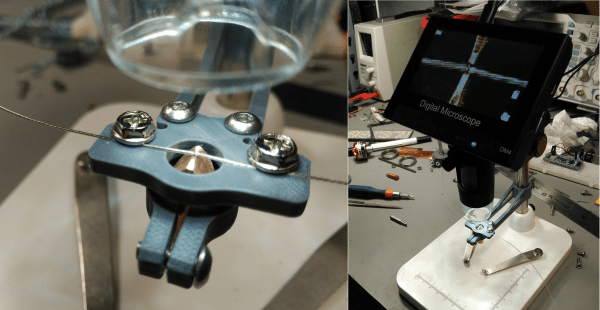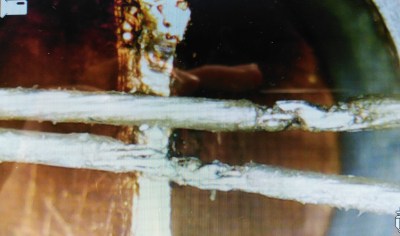When it comes to legged robots, it’s easy to think that the complexity and machining costs would keep these creatures far away from becoming anyone’s garage hobby. But, through a series of clever design choices, [Damian Lickindorf] has found a way to beat the odds and give life to Stanley, a low-cost, dynamic quadruped with some serious kick!
As if building a working legged robot weren’t already a tricky task, [Damian] has made some classy design choices to keep the price low and reduce fabrication complexity without sacrificing performance. Keeping up with the latest trend in Quasi-Direct Drive legged robots that started with the MIT Mini Cheetah, [Damian] constructed a small transmission with a gear reduction under 1:9. This choice slightly reduces the amount of heat produced by operating the motor at low-speeds with high torque without sacrificing too much control bandwidth (think: “leg responsiveness”).
Unlike the Cheetah, though, which uses a planetary gearbox, [Damian] opts for a capstan drive, a cable-driven transmission that’s both backlash free and backdriveable: two must-haves for force-sensitive dynamic legged robots. For legs, he’s opting for 2d machined FR4 (think: circuit board material). And for motors, he’s chosen a set of brushless motors with a large gap radius and driven by Moteus Drivers. The result is high fidelity, dynamic build that’s a fraction of the cost of some of the creatures we’re seeing emerge from academic research labs.
If you’re looking to feast your eyes on some action shots, look no further than [Damian’s] YouTube and Instagram presence. And if you’re looking to follow the project, have a look at the Hackaday.io project. While we’re eager to see the project continue to unfold, we’re thrilled by how far it’s come. In the meantime, be sure to take a look at one of the project’s inspirations: the Mjbots Quad A0.
Finally, since we’ve not seen capstan drives much on Hackaday, if you’re curious about these mechanisms and can get past the paywall, these two research papers might be a good place to dig deeper.
Continue reading “Capstan Drive Is Pulling The Strings On This Dynamic Quadruped”














